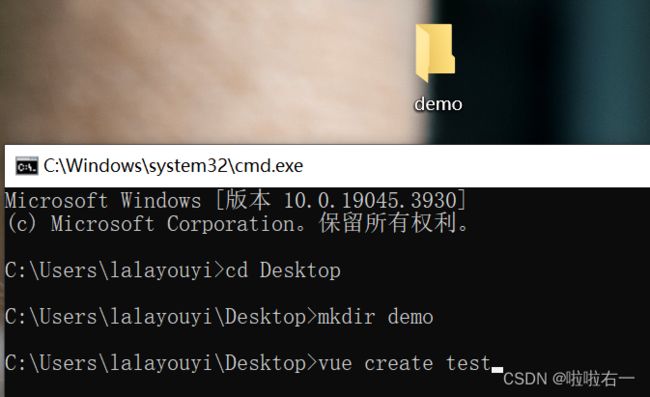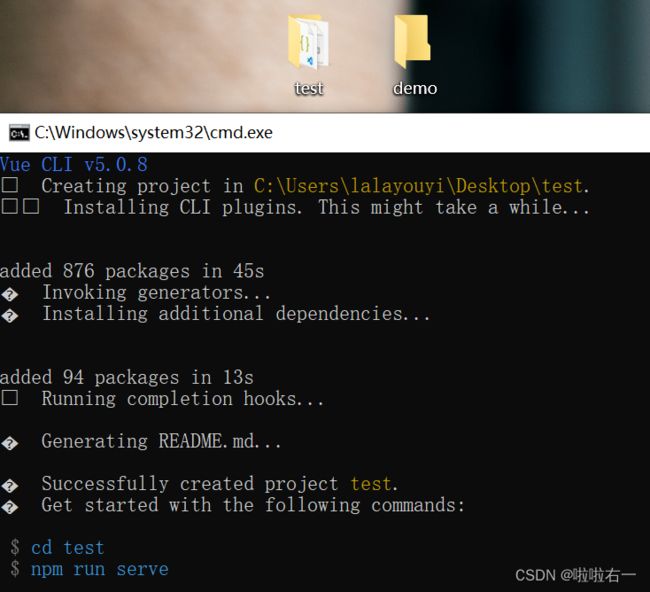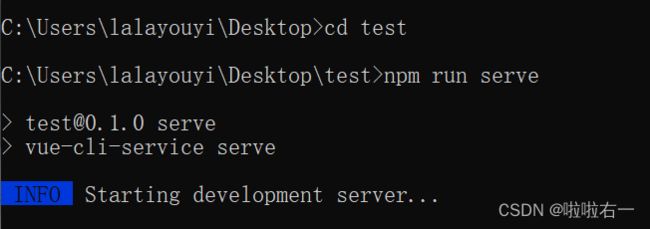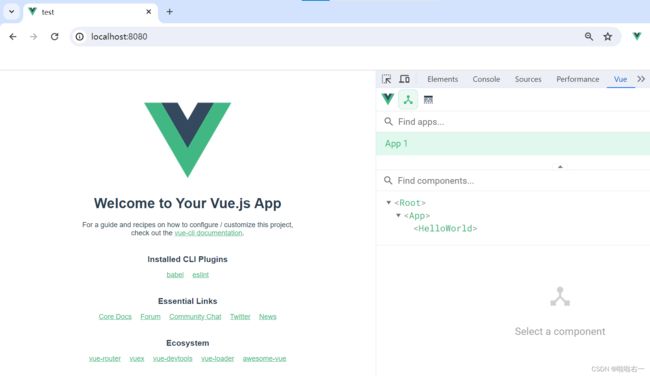Vue | (三)使用Vue脚手架(上) | 尚硅谷Vue2.0+Vue3.0全套教程
文章目录
- 初始化脚手架
-
- 创建初体验
- 分析脚手架结构
- 关于render
- 查看默认配置
- ref与props
-
- ref属性
- props配置项
- 混入
- 插件
- scoped样式
学习链接:尚硅谷Vue2.0+Vue3.0全套教程丨vuejs从入门到精通,本文对应p61-p69,博客参考尚硅谷公开笔记,补充记录实操。
初始化脚手架
创建初体验
- Vue 脚手架是 Vue 官方提供的标准化开发工具(开发平台)。
CLI:command line interface(目前已经维护了,但也试一试)
- 全局安装:
- 创建过程
分析脚手架结构
- 详见讲解,实操见真知
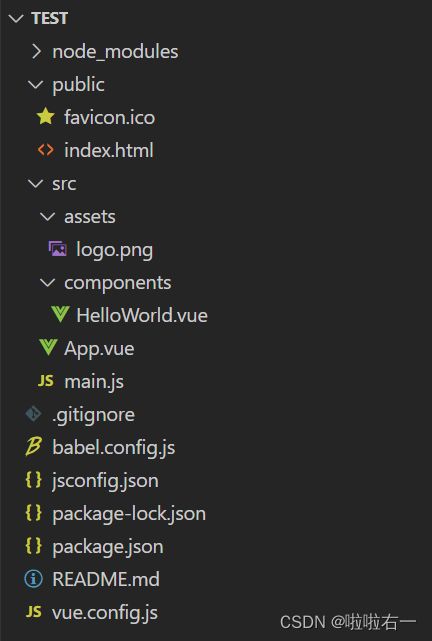

- 填坑,把上一节没跑出来的代码跑一下
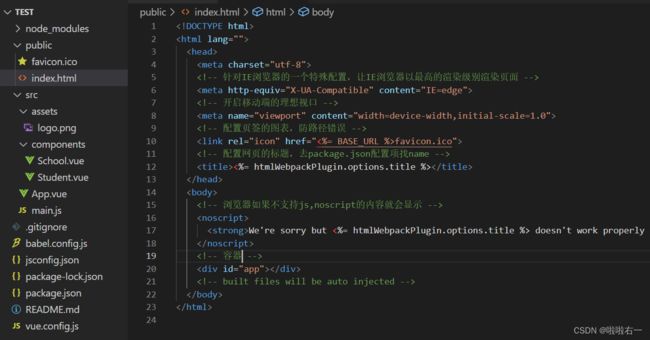
- ⚠️把对应的地址链接调整后,运行后出现如下报错:

- ①将School和Student对应命名改为复合命名。
- ②package.json文件中的
eslintConfig,找到rules处,添加以下代码即可解决"rules":{ "no-mixed-spaces-and-tabs":0 }
- 运行结果
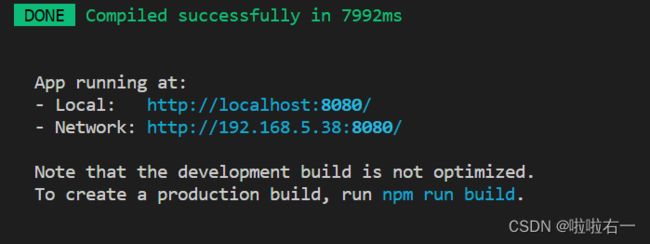

关于render
- 与上一节最后一个小案例不同的是,Vue默认创建的
main.js如下,且我在上述案例应用时直接应用了默认生成的main.jsimport Vue from 'vue' import App from './App.vue' Vue.config.productionTip = false new Vue({ render: h => h(App), }).$mount('#app') render函数的本质就是创建元素,也就是说本质是类似于以下的函数:render(createElement){ return createElement('h1','你好啊') } //精简后就是: render: h => h('h1','你好啊') //也就是上边的render: h => h(App)- 按原来的版本运行了一下,会报错。解决办法是,修改
import Vue from 'vue'为import Vue from 'vue/dist/vue'。原来引入的vue其实是残缺版的vue(缺少了模板解析器),它无法解析template,标签类型的template不受影响,也即.vue文件里的不受影响。// 原来的写法 new Vue({ el:'#app', template:``, components:{App}, }) 
- 为什么要用残缺版vue——更精简。

- 关于不同版本的Vue:
vue.js与vue.runtime.xxx.js的区别:vue.js是完整版的Vue,包含核心功能 + 模板解析器。vue.runtime.xxx.js是运行版的Vue,只包含核心功能,没有模板解析器。
- 因为
vue.runtime.xxx.js没有模板解析器,所以不能使用template配置项。需要使用render函数接收到的createElement函数去指定具体内容。
查看默认配置
- Vue脚手架隐藏了所有webpack相关的配置。
- 若想查看具体的webpack配置,要执行
vue inspect > output.js,会生成output.js和vue.config.js(这里和教程不一样,现在后者也会直接生成)。 - 使用
vue.config.js可以对脚手架进行个性化定制,详情见官网配置参考(不过一般谁改哇[・_・?])。

ref与props
后续代码都在上述框架里修改,文内不一定展示完整代码。
ref属性
-
被用来给元素或子组件注册引用信息(id的替代者)
-
应用在html标签上获取的是真实DOM元素,应用在组件标签上是组件实例对象(vc)
-
使用方式:
- 打标识:
.....
- 获取:
this.$refs.xxx
<template> <div> <h1 v-text="msg" ref="title">h1> <button ref="btn" @click="showDOM">点我输出上方的DOM元素button> <School ref="sch"/> div> template> <script> //引入School组件 import School from './components/School-Test' export default { name:'App', components:{School}, data() { return { msg:'欢迎学习Vue!' } }, methods: { showDOM(){ console.log(this.$refs.title) //真实DOM元素 console.log(this.$refs.btn) //真实DOM元素 console.log(this.$refs.sch) //School组件的实例对象(vc) } }, } script> - 打标识:
props配置项
-
功能:让组件接收外部传过来的数据
-
传递数据:
-
接收数据:
-
第一种方式(只接收):
props:['name'] -
第二种方式(限制类型):
props:{name:String} -
第三种方式(限制类型、限制必要性、指定默认值):
props:{ name:{ type:String, //类型 required:true, //必要性 default:'老王' //默认值 } }
备注:props是只读的,Vue底层会监测你对props的修改,如果进行了修改,就会发出警告,若业务需求确实需要修改,那么请复制props的内容到data中一份,然后去修改data中的数据。
-
-
传的时候:
<template> <div> <Student name="youyi" sex="女" :age="20"/> div> template> <script> import Student from './components/Student-Test' export default { name:'App', components:{Student} } script> -
接收的时候:
props,必须要写类似于微信转账确认(Student-Test.vue)<template> <div> <h1>{{msg}}h1> <h2>学生姓名:{{name}}h2> <h2>学生性别:{{sex}}h2> <h2>学生年龄:{{myAge+1}}h2> <button @click="updateAge">尝试修改收到的年龄button> div> template> <script> export default { name:'Student-Test', data() { console.log(this) return { msg:'我是一个尚硅谷的学生', //props优先级更高,先接收 //和后续update以及上述+1对应,可以规避vue报错和错乱 myAge:this.age } }, methods: { updateAge(){ this.myAge++ } }, //简单声明接收(传过来了你要确认接收) // props:['name','age','sex'] //接收的同时对数据进行类型限制(不该收的不收) /* props:{ name:String, age:Number, sex:String } */ //接收的同时对数据:进行类型限制+默认值的指定+必要性的限制 props:{ name:{ type:String, //name的类型是字符串 required:true, //name是必要的 }, age:{ type:Number, default:99 //默认值 }, sex:{ type:String, required:true } } } script>
混入
-
功能:可以把多个组件共用的配置提取成一个混入对象(提取公因数)。
-
使用方式:
-
第一步定义混合:
{ data(){....}, methods:{....} .... } -
第二步使用混入:
- 全局混入:
Vue.mixin(xxx) - 局部混入:
mixins:['xxx']
- 全局混入:
-
-
Student-Test.vue<template> <div> <h2 @click="showName">学生姓名:{{name}}h2> <h2>学生性别:{{sex}}h2> div> template> <script> // 局部 // import {hunhe,hunhe2} from '../mixin' export default { name:'Student-Test', data() { return { name:'右一', sex:'女' } }, mounted() { // 混合的mounted优先,原有的mounted在后 console.log('你好啊!!Student(ver)') }, // mixins:[hunhe,hunhe2] } script> -
School-Test.vue<template> <div> <h2 @click="showName">学校名称:{{name}}h2> <h2>学校地址:{{address}}h2> div> template> <script> //引入一个hunhe // import {hunhe,hunhe2} from '../mixin' export default { name:'School-Test', data() { return { name:'尚硅谷', address:'北京', x:666 } }, mounted() { console.log('你好啊!!School(ver)') }, // mixins:[hunhe,hunhe2], } script> -
App.vue<template> <div> <School/> <hr> <Student/> div> template> <script> import School from './components/School-Test' import Student from './components/Student-Test' export default { name:'App', components:{School,Student} } script> -
mixin.jsexport const hunhe = { methods: { showName(){ alert(this.name) } }, mounted() { // 混合的mounted是全局性的,什么都要掺和一下 // 混合的mounted优先,原有的mounted在后 console.log('你好啊!') }, } export const hunhe2 = { data() { return { //数据混合作为一个补充,不干扰原有数据 x:100, y:200 } }, } -
main.js//引入Vue import Vue from 'vue' //引入App import App from './App.vue' import {hunhe,hunhe2} from './mixin' //关闭Vue的生产提示 Vue.config.productionTip = false Vue.mixin(hunhe) Vue.mixin(hunhe2) //创建vm new Vue({ el:'#app', render: h => h(App) })
插件
-
功能:用于增强Vue。
-
本质:包含install方法的一个对象,install的第一个参数是Vue,第二个以后的参数是插件使用者传递的数据。
-
定义插件:
对象.install = function (Vue, options) { // 1. 添加全局过滤器 Vue.filter(....) // 2. 添加全局指令 Vue.directive(....) // 3. 配置全局混入(合) Vue.mixin(....) // 4. 添加实例方法 Vue.prototype.$myMethod = function () {...} Vue.prototype.$myProperty = xxxx } -
使用插件:
Vue.use()
plugins.jsexport default { install(Vue,x,y,z){ console.log(x,y,z) //全局过滤器 Vue.filter('mySlice',function(value){ return value.slice(0,4) }) //定义全局指令 Vue.directive('fbind',{ //指令与元素成功绑定时(一上来) bind(element,binding){ element.value = binding.value }, //指令所在元素被插入页面时 inserted(element,binding){// eslint-disable-line no-unused-vars element.focus() }, //指令所在的模板被重新解析时 update(element,binding){ element.value = binding.value } }) //定义混入 Vue.mixin({ data() { return { x:100, y:200 } }, }) //给Vue原型上添加一个方法(vm和vc就都能用了) Vue.prototype.hello = ()=>{alert('你好啊')} } }Student.Test.vue<template> <div> <h2>学生姓名:{{name}}h2> <h2>学生性别:{{sex}}h2> <input type="text" v-fbind:value="name"> div> template> <script> export default { name:'Student-Test', data() { return { name:'lala', sex:'女' } }, } script>School-Test.vue<template> <div> <h2>学校名称:{{name | mySlice}}h2> <h2>学校地址:{{address}}h2> <button @click="test">点我测试一个hello方法button> div> template> <script> export default { name:'School-Test', data() { return { name:'尚硅谷12345', address:'北京', } }, methods: { test(){ this.hello() } }, } script>App.vue同上。main.js//引入Vue import Vue from 'vue' //引入App import App from './App.vue' //引入插件 import plugins from './plugins' //关闭Vue的生产提示 Vue.config.productionTip = false //应用(使用)插件 Vue.use(plugins,1,2,3) //创建vm new Vue({ el:'#app', render: h => h(App) })
scoped样式
- 作用:让样式在局部生效,防止冲突。
- 写法:


